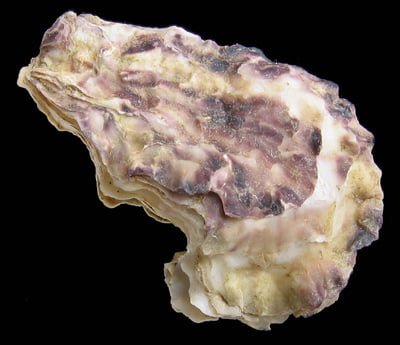
Cultivating large and delicious oysters is a constant goal of aquaculture. However, traditional cultivation methods rely on diploid oysters, which present challenges such as slow growth, lower meat quality, and prolonged reproductive cycles.
A new study published in the journal Aquaculture by scientists from the South China Sea Institute of Oceanology, the Sanya Research Institute of Marine Ecological Environment Engineering (China), the Key Laboratory of Breeding Biotechnology and Sustainable Aquaculture (China), and the University of Chinese Academy of Sciences explores a promising technique to produce faster-growing Portuguese oysters of the species Crassostrea angulata. This method uses the selective breeding of tetraploid oysters, paving the way to improve oyster production.
Triploid Oysters: Fast Growth, Low Reproduction
Triploid oysters offer a ray of hope. These oysters, which exhibit faster growth, superior meat quality, and greater stress tolerance, are ideal for a thriving aquaculture industry. The key to producing triploids lies in crossing tetraploid males with diploid females.
Triploid oysters have three sets of chromosomes instead of the usual two. This genetic adjustment offers a double benefit: significantly faster growth and superior meat quality.
However, this rapid growth comes at a cost: triploid oysters struggle to reproduce. This obstacle hampers traditional methods of breeding these faster-growing oysters.
The Power of Tetraploid Parents
Researchers have identified a solution: breeding triploid oysters through tetraploid parents. Tetraploid oysters have four sets of chromosomes instead of the usual two in diploids. Mating tetraploid males with diploid females produces triploid offspring, which inherit the rapid growth trait from the triploid parent.
Selective Breeding for Faster Growth
Selective breeding, a cornerstone of genetic improvement in aquatic animals, offers exciting possibilities for oysters. With their short reproductive cycles, shellfish have immense potential for genetic advancement through selective breeding. Additionally, research suggests high heritability of growth-related traits in oysters, making selective breeding a powerful tool to boost their growth.
This research delves into the world of selective breeding of the faster-growing tetraploid Crassostrea angulata. Using an induced tetraploid population as a base, the scientists employed a three-generation breeding program. The top 10% fastest-growing individuals (shell height) were chosen to breed in each generation. Growth, survival, sex ratio, and ploidy composition were meticulously compared between the selected group and a control group.
Stay Always Informed
Join our communities to instantly receive the most important news, reports, and analysis from the aquaculture industry.
The results were impressive: the selected group showed significantly faster growth, with shell height and weight exceeding the control group by over 34% in the third generation.
Maintaining Ploidy Stability
A potential concern with tetraploid oysters is chromosome loss during reproduction. The study observed that some tetraploids lost chromosomes and became diploid or triploid, particularly during gamete development. However, the selectively bred group showed a decrease in this phenomenon over generations, suggesting improved ploidy stability.
Fertility and Sex Ratio
Interestingly, both the control and selective breeding groups exhibited some level of fertility. The sex ratio skewed towards males, with hermaphrodites also present. Further research is needed to fully understand the implications of this finding for commercial production.
A Promising Path for Aquaculture
This study successfully demonstrates the potential of selective breeding within the tetraploid C. angulata oysters. The results pave the way for the commercial production of faster-growing triploid oysters, offering significant benefits to the aquaculture industry. Additionally, the research provides valuable insights for further exploration of genetic improvement in tetraploid oysters, potentially applicable to other species as well.
The study was funded by the Guangzhou Science and Technology Project; Hainan Provincial Key R&D Programme; Guangdong Basic and Applied Basic Research Foundation; the National Science Foundation of China; Guangdong Provincial Key Research and Development Program; the Project of Sanya Yazhou Bay Science and Technology City; and the Science and Technology Project of Guangdong Provincial Department of Natural.
Contact
Yuehuan Zhang
South China Sea Institute of Oceanology, Chinese Academy of Sciences
164 West Xingang Road, Guangzhou 510301, China.
Email: yhzhang@scsio.ac.cn
Reference
Qin, Y., Wan, W., Li, J., Yue, C., Wang, Z., Xing, Q., Ma, H., Li, J., Yu, Z., & Zhang, Y. (2024). Successive selection responses of tetraploid Crassostrea angulata: Comparison of growth, survival, sex ratio and ploidy composition between selected and unselected groups. Aquaculture, 591, 741127. https://doi.org/10.1016/j.aquaculture.2024.741127
Editor at the digital magazine AquaHoy. He holds a degree in Aquaculture Biology from the National University of Santa (UNS) and a Master’s degree in Science and Innovation Management from the Polytechnic University of Valencia, with postgraduate diplomas in Business Innovation and Innovation Management. He possesses extensive experience in the aquaculture and fisheries sector, having led the Fisheries Innovation Unit of the National Program for Innovation in Fisheries and Aquaculture (PNIPA). He has served as a senior consultant in technology watch, an innovation project formulator and advisor, and a lecturer at UNS. He is a member of the Peruvian College of Biologists and was recognized by the World Aquaculture Society (WAS) in 2016 for his contribution to aquaculture.




